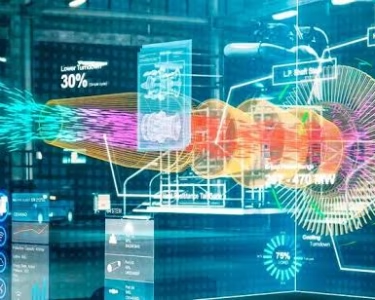For decades, our interaction with computers has been defined by screens—glowing rectangles we stare at for hours. From the desktop era to the smartphone revolution, screens have been our window to the digital world. But a new shift is underway, one that could make screens—and even visible devices—fade into the background.
Welcome to the age of ambient computing.
What Is Ambient Computing?
Ambient computing is the idea that technology becomes everywhere yet invisible—blending seamlessly into our environment, always ready to help, without demanding our constant attention.
Instead of pulling out a phone or sitting in front of a laptop, you might simply speak, gesture, or move through a space and the technology will respond.
Think:
- Smart homes that adjust lighting and temperature without you asking.
- Wearables that monitor health silently, alerting you only when needed.
- Voice assistants that integrate with every room, every device, every appliance.
The Shift from Screens to Background Intelligence
Right now, most tech requires active use—we unlock a device, open an app, and manually command it. Ambient computing flips that script:
- Context-Awareness – Devices know your routines and preferences.
- Proactive Assistance – They act without explicit commands.
- Seamless Integration – Multiple devices communicate behind the scenes.
Example: Instead of checking your phone for traffic, your car might automatically start early because it knows there’s a delay on your route. No taps, no swipes—just action.
Why This Matters
- Less Screen Time – Our eyes and minds are freed from constant digital engagement.
- Faster Interactions – Tasks happen without manual steps.
- More Human-Centric Tech – Technology adapts to us, not the other way around.
The Challenges
Ambient computing isn’t without its issues:
- Privacy Risks – Always-on devices could collect sensitive personal data.
- Over-Reliance – We may forget how to function without automated help.
- Invisible Errors – When tech acts in the background, mistakes can go unnoticed until they cause bigger problems.
The Future Without Visible Devices
In the next decade, we might live in homes where we rarely touch a screen. Digital assistants will be embedded in walls, furniture, clothing, and vehicles, making “computers” less like tools and more like an invisible layer of reality.
The question isn’t just when this will happen—but how comfortable we’ll be when it does. Will ambient computing feel like magic… or surveillance?
If you want, I can also make a 60-second YouTube Shorts script for this topic that hooks viewers with “Imagine a world without devices” and ends with a thought-provoking question. That would make it perfect for grabbing attention fast.
Do you want me to prepare that now?




